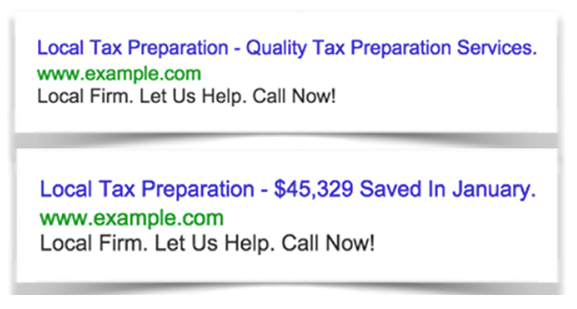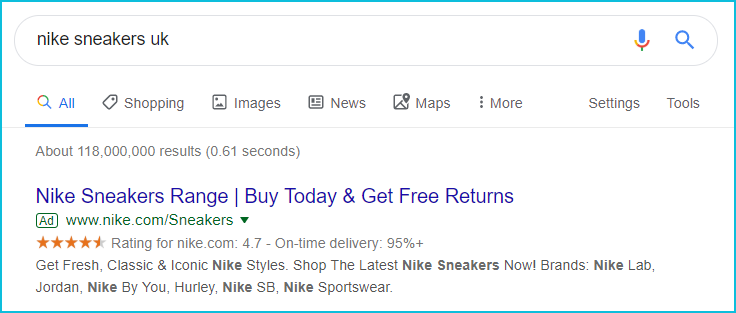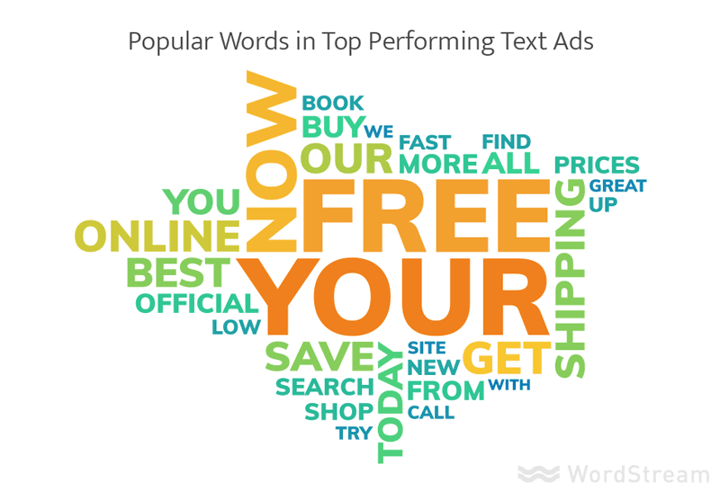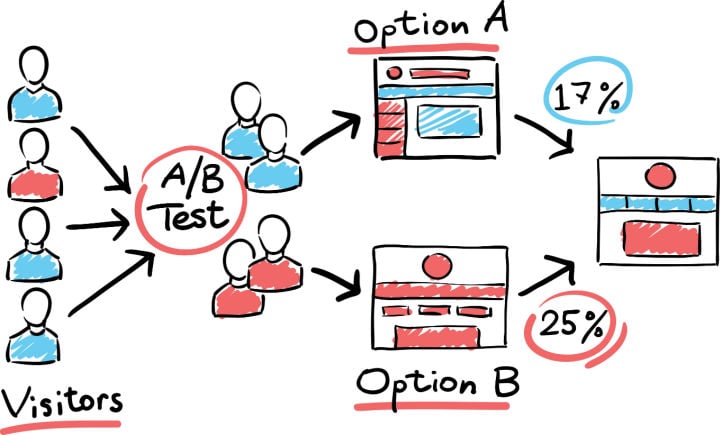SEO Tips for E-commerce: Improve Your Online Shop's Ranking in Google
SEO is an important tool for e-commerce businesses to bring in new customers. Here are the best tips for your online shop to rank higher in Google.

Google Ads offers business owners lots of possibilities. Although Google search ads might not be the flashiest ads out there, they can be extremely effective. Knowing what strategies to take, what to focus on, and how to optimise your Google Ads can make your campaigns even more impactful.
We've covered a lot of topics in this article. If you want to skip ahead, here is the table of contents:
We've also created a short, printable version of this checklist. Head towards the bottom of this page for the checklist.
Before we get into the details of what makes for a perfect Google Ad, let’s define what “perfection” is in this context.
What it all really comes down to is the Quality Score of your ad. This Quality Score is a rating Google awards your ad to help determine your ad rank when you bid on certain keywords.
By having a great Quality Score, there’s a good chance you will end up paying less for ad space than some of your competitors because Google thinks your ad will inspire more (relevant) clicks and will therefore earn you (and them!) more money.
Having highly relevant ads is important for Google's brand because they want to offer users useful links. If users end up on untrustworthy sites, then people will stop clicking on Google Ads altogether. Basically, this Quality Score “reward” is meant to inspire advertisers to create higher quality ads.
Many factors go into your Quality Score. Google tends to keep the full details of their scoring system a bit secretive, but we do know some of those factors:
Of course, one factor that determines an ad’s effectiveness is the traffic it brings you. In other words, does the ad inspire clicks? The click-through rate is the percentage of people who actually click on your ads from the total number of people seeing your ads (impressions). The start of every customer journey begins with a click. Make sure your ads inspire them.
However, clicks are not the only factor. This really makes sense if you think about it - Google wants the ads that appear for a search term to be relevant to that specific search term.
Think about it like this - If you bid for your ad selling affordable football boots to appear when people search “hiking boots”, you might inspire clicks with a strong price offer and a catchy headline. However, there is no strong connection between hiking boots and football boots (other than the word boots).

Attempting to sell hiking boots to someone who has searched for football boots is like trying to sell apples to someone looking for oranges.
(Image source: Shutterstock/David Gilder)
Google doesn’t want to reward irrelevant ads, so they might not show your ad or charge you more to post it for this search term. That is why it’s important to bid on the correct keywords and make sure you’re not posting your ads for the wrong ones. Makes sense, right?
Recommended reading:
5 Tips on How Negative Keywords in Google Ads Can Increase Your Performance
Another way Google determines your ad relevance is by looking at where visitors end up after they click on your ad. This is another safeguard to ensure ad relevance. The logic behind this is similar to the example above about a football boots ad being displayed under a search for hiking boots.
Again, imagine that the search term is “hiking boots”, but this time the ad is also for hiking boots. So far, so good. However, the link in this ad takes you to a product page for football boots. This time around the ad matches the search term, but the landing page is completely irrelevant. Google recognises this and adjusts your Quality Score accordingly.
This element is pretty self-explanatory. Google likes to reward accounts that perform well and optimise their ads to be highly relevant to their users. This is simply another example of this. If your Quality Scores have been high in the past and your ads have performed well, then Google factors this into your next ad campaigns.

Shutterstock/Jane0606
Now, before we get into the tips for creating a highly effective Google Ad, it might be worth taking a quick look into the different elements of a Google Ad.
Sample of a typical Google Ad
(Click on the image to enlarge it)
Most of these elements are pretty self-explanatory.
Headlines are clearly at the top. Each one is separated by a vertical line “|”. You can create up to three headlines, which can be 30 characters each.
Website links can include two paths at 15 characters each.
Descriptions can be 90 characters each (two per ad).
However, with ad extensions, there are plenty of options here. Some of these are manually added to your ads and some are automatic.
Either way, it is recommended to take advantage of these extensions if only for the fact that they increase the size of your ads, let alone that they add extra information for your viewers to see.
One of the most popular ad extensions is for seller ratings, which gets your star-rating displayed in your ads. In order for this to be displayed, you must collect customer reviews with an official Google partner (like Trusted Shops!).
It’s also worth noting that Google is known to change some of the elements in Google Ads and their formats every once in a while.
Now that we have defined different parts of Google Ads and know what it means to be an effective ad, let’s look at some tips to keep in mind when creating your texts.
Recommended reading:
What Is SEA and How Can Your Business Benefit From It?
Let’s begin at the top of your ad with the headlines.
You don’t have much space for each headline. Therefore, you need to take this opportunity and speak directly to your customer persona. They have a problem, so you should provide the solution right in your headline.
This is a classic advertising technique. Use an imperative sentence to inspire your potential customer to take action. Some of the best slogans use the imperative (e.g. Just do it. Be different). A good call-to-action (CTA) does the same.
In the example below, Shopify covers both of these tips in their headlines.

The user is looking for solutions for opening up an online shop. Shopify uses a very direct headline to solve this problem (i.e. "Create an Ecommerce Website").
The second headline goes right into their offer and gives the reader a course of action to take right away (Start a 14-Day Free Trial Now).
Generally, it’s recommended to avoid asking a question in your headline (e.g. Want to start an online shop?) You only have a few characters to work with and since the user has searched this and knows their own problem, you’re better off addressing the solution rather than the problem.
Use the description to expand on your headline. Reinforce what you’ve said by adding more details about your business and your offer.
This is where you can differentiate yourself from your competitors. Generally speaking, try to highlight what makes your business unique and separates you from your competition.

Shutterstock/Just dance
Use your superlatives (e.g. the biggest selection, the most accurate predictions, the fastest delivery times).
Numbers are easy to digest and therefore tend to be quite impactful. This can include the discount you provide (40%), the money they'll save (save £50), the total number of customers you’ve worked with (We’ve helped over 400 businesses since 2012) or starting prices (starting at £75).
Although the A/B test in this example showed numbers in the headlines instead of in the description, it influenced click-through rates positively anyway.
 An A/B test to see how numbers in a headline affect the click-through rate
An A/B test to see how numbers in a headline affect the click-through rate
(Source: Wordstream)
According to the test, we see that the second version of this ad had a 217% increased click-through rate and a 23% improvement in conversions. Note that the 2nd version was also more timely by including “January” in the headline as well.
Taking the “numbers game” one step further, surely any sale will include information regarding how much customers could potentially save. However, you can also provide coupon codes to add a sense of urgency (they tend to only be valid for a limited time).
Again, make sure you end your description with a call to action. You can make it different from the headline to avoid getting too repetitive, but the essence should be the same - to inspire them to take action.
Although this might seem pretty straightforward, there is more to this than meets the eye. As we mentioned before, your landing page needs to be relevant to the search terms you bid on. Remember, this can affect your Quality Score and your CPCs.
Without keyword stuffing, it would be a good idea to have the same keywords that you’ve bid on also appear in your landing pages.
This will definitely help Google realise the relevance of your ad to the keywords you're advertising for.
The user experience must be good. If people click on your ad (remember, this costs money), head to your page, and then end up disappointed by what’s on your website, you’ve spent money on traffic needlessly.
Your landing page is basically that final step before they agree to pay you for your products, so you need to invest time and money into making it a good experience.
Similar to your ads, you’ll want to be direct with your visitors, especially for custom made landing pages. Reinforce the information they’ve seen in your ad with clear headlines and actionable CTAs. Be straightforward and direct and don’t clutter your page with too many elements.
As was mentioned before, ad extensions are definitely worth looking into. You can provide extra information to your target audience in order to help convince them to click on your ad.
Here are some of our favourite ad extensions:
Add a phone number, call button or text button to your ad. If you are a local business, showing your phone number can reassure your potential customers that your shop is right in the neighborhood.
This is easily our favourite ad extension. You’ve certainly seen this in a Google ad before.

Those orange stars appear under the link and before the description. The bright colour attracts attention and the rating itself can help build trust before the user even clicks on your ad.
Again, it’s important to note that you must collect reviews with a Google partner in order to have your star-rating shown here.
Here are some general tips to keep in mind when creating your Google Ads.
Be sure to exclude the keywords that you don’t want your ad to show up for. Some examples might include “free” if you don’t offer free items.
Either way, some of these negative keywords will make themselves apparent as time passes.
If it’s relevant, use some of the words that have been proven to lead to clicks. According to Wordstream, those words include:

The most popular words in the best-performing text ads
(Source: Wordstream)
Also, be sure to find those keywords that are important in your industry. Try not to get too "jargony" if you want to attract a wide range of shoppers. However, if you sell to a very specific niche market, you can feel free to use those popular buzzwords (e.g. fastest processors, spiciest flavours, organic and vegan).
Once the ad goes live, check which times of day work best, which search terms are converting the most customers, which devices lead to the most traffic, how specific the keyword match-types are. Be sure to keep an eye on things, give them enough time to perform that you get meaningful input, and then make adjustments to boost performance.
It’s worth noting that some ads can be effective for only so long. Although they may have started out working wonders for winning you traffic, at some point, the ad might just lose its fire. If you start to notice great ads under-performing, it might be time to freshen things up!
It’s never a bad idea to test some of your ads by creating and displaying slightly different variations of them. A/B tests let you test these small changes to your ads (or other elements of your website) to help you figure out which version performs better.
For example, you can run two ads that have the same headline, but have slightly different descriptions or vice versa.

Shutterstock/OneLineStock.com
After all, if you’re going to invest money into ads, you’ll want to make sure that you keep your best performing ones.
Again, make sure you give them enough time to gather a large amount of impressions. You don’t want to make decisions too quickly, but you also don’t want to let your ineffective ads stay live for too long either.
Google Ads can be a great way of skipping to the top of the search results. They can get you lots of relevant traffic when done correctly. Just be sure to keep all our tips in mind, test things out, and keep an eye on their progress. With a few easy steps, you’ll be able to improve your Quality Score and drive traffic to your website with lower CPCs.
We’ve summarised all the most important points into one downloadable (and printable) checklist. Simply, click on the banner below to get your Perfect Google Ad checklist.
06/04/22SEO is an important tool for e-commerce businesses to bring in new customers. Here are the best tips for your online shop to rank higher in Google.
Valentine's Day has grown in popularity across Europe. We're sharing some romantic statistics (redundant, right?) and look at 9 marketing tips for V-day.